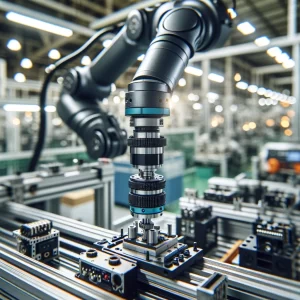In the evolving landscape of electronics, the integration of digital components for analog functions stands out as a testament to innovative engineering. Among these advancements, digital potentiometers emerge as pivotal elements in modern electronic design, offering precision, reliability, and ease of integration that surpass their mechanical counterparts.
What is a Digital Potentiometer?
A digital potentiometer, often referred to as a “digipot,” functions similarly to a traditional potentiometer. It provides a variable resistance that can be adjusted electronically rather than manually. Digital potentiometers are typically constructed using arrays of resistive elements, switches, and digital control circuitry. The primary advantage of digipots over mechanical potentiometers is their ability to withstand wear and tear, achieve finer resolution adjustments, and integrate seamlessly with digital systems through communication protocols such as I2C or SPI.
Applications of Digital Potentiometers
Digital potentiometers find their applications across a wide range of fields. They are extensively used in:
- Adjusting the volume in audio systems.
- Calibrating the sensitivity of sensors.
- Controlling the brightness of LEDs.
- Tuning filters and amplifiers in communication devices.
These applications benefit from the digital potentiometer’s ability to maintain precise control over resistance settings, which can be programmatically adjusted and stored, ensuring consistent performance and facilitating automated adjustments.
Why the LS7190 Stands Out
The LS7190 by LSI/CSI exemplifies the pinnacle of digital potentiometer design. It features a 3-terminal setup where the resistance between two fixed terminals can be adjusted by changing the position of a wiper terminal across 64 programmable steps. This allows for a finely tuned resistance adjustment, which can be controlled via simple digital signals.
Here’s why the LS7190 is a compelling choice for many applications:
- Flexibility in Control: It accepts multiple control inputs including up/down clocks, A/B quadrature clocks, or direct SPI communication. This versatility makes it adaptable to a variety of user needs and applications.
- Durability and Reliability: Unlike mechanical potentiometers, the LS7190 is not prone to wear and degradation over time, ensuring a longer service life even in demanding applications.
- Ease of Integration: Designed to easily integrate with microcontrollers and other digital systems, the LS7190 can be incorporated into complex circuits without requiring significant additional hardware.
Conclusion
Digital potentiometers like the LS7190 are at the forefront of the transition from mechanical to electronic control in analog systems. They not only provide enhanced performance and reliability but also open up new possibilities for automation and precision control in electronic design. Whether you’re developing consumer electronics, automotive interfaces, or sophisticated industrial equipment, incorporating a digital potentiometer can significantly enhance the functionality and robustness of your system.



